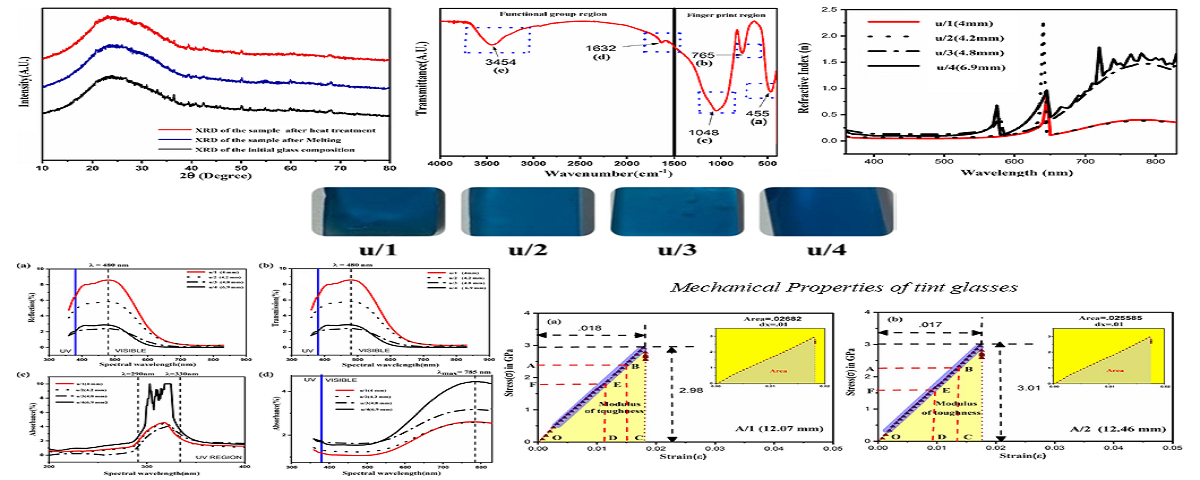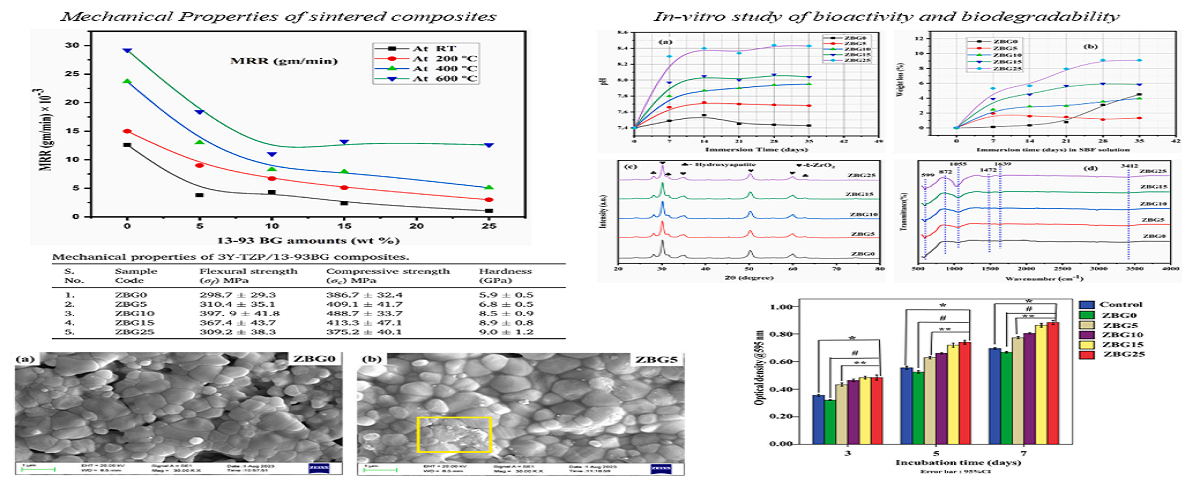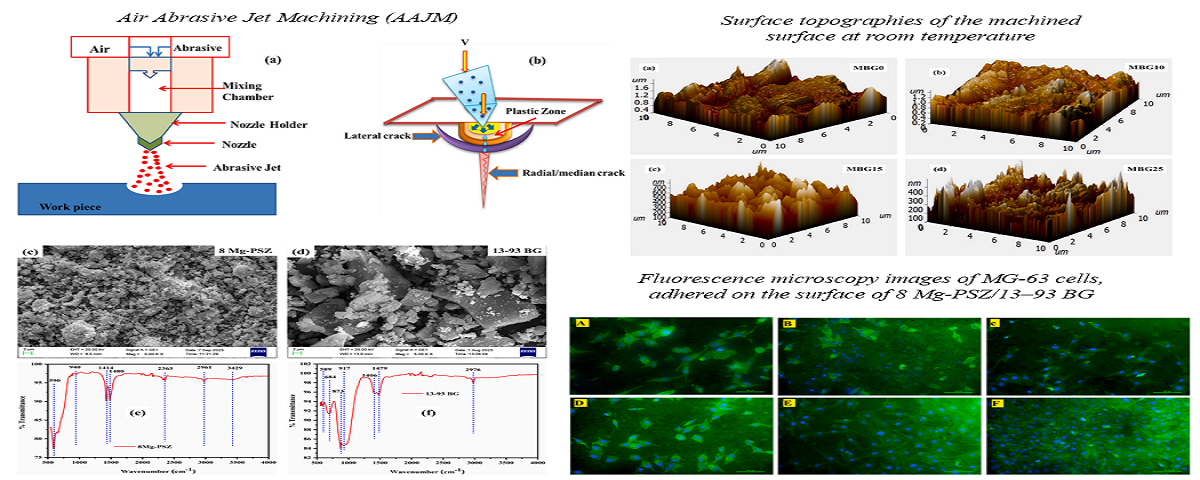Glass & Glass-ceramics
Any material, inorganic, organic, or metallic, formed by any technique, which exhibits glass transformation behavior is a glass. Glass-ceramics are derived from the parent glasses by controlled crystallization and have properties dictated, in part, by the efficiency of crystal nucleation within the glass volume. Controlled ceramization yields an array of materials with interesting combinations of properties. Both glass and glass-ceramics have widespread applications in construction, optical, defense, aerospace, telescopes, kitchenware, medical, electrical, and optoelectronics. Glass-ceramics also have a number of diverse applications for electronic devices and circuits, which include microelectronic substrate, packaging, multilayer and barrier layer capacitors etc. The recent work is in progress for the development of special coloured glasses, infrared filter glasses suitable for night vision and high density radiation shield glasses. The photoluminescence characteristics of the glasses doped with various rare earth and transition metal oxides are also being investigated for photonic applications. Studies on different micronutrient glasses have been carried out for their suitable application in agriculture for different soil conditions. In addition, we are also focusing on the following research areas in our department.
- High-end glass composites for structural/space applications
- Bioactive coating for metallic implants
- Bio-glass/glass-ceramics for bone tissue engineering applications
- Glassy fertilizers from domestic/industrial wastes
- Utilization of agricultural/industrial wastes into engineering products
- Glass nutrients/frits for improving soil fertility
Associated Faculty Members :
- Dr. Manas Ranjan Majhi
- Dr. Pradip Kr. Roy
- Dr. Subrata Panda
- Dr. R. K. Chaturvedi
Recent Publications:
- Ceramic International, 50, 1087-1106, 2024 doi.org/10.1016/j.ceramint.2023.10.203
- Ceramic International, 50, 18238-18257, 2024 doi.org/10.1016/j.ceramint.2024.02.308
- Silicon, 15(16): 6851-6865, 2023 doi.org/10.1007/s12633-023-02542-z
- Int. J. Agric. Food Sci., 4(2): 01-06, 2022 doi.org/10.33545/2664844X.2022.v4.i2a.66


